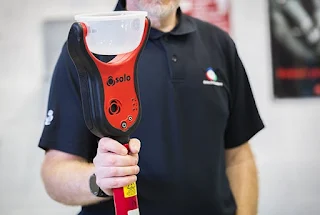Smoke and heat testing equipment are tools used to evaluate the performance and effectiveness of fire protection systems, such as smoke detectors, fire alarms, ventilation systems, and fire suppression systems. These tests are crucial for ensuring the safety and functionality of these systems in the event of a fire. Here are some common types of smoke and heat testing equipment:
Smoke Detectors Testers: These devices simulate smoke to test the sensitivity and response time of smoke detectors. They generate non-toxic smoke, which is introduced into the detector's sensing chamber to trigger the alarm.
Heat Detectors Testers: Heat detectors testers are used to check the activation temperature and response of heat detectors. They produce controlled heat that is applied to the detector, verifying its proper operation.
Smoke Machines: Smoke machines generate artificial smoke that can be used to simulate the presence of smoke in a controlled environment. They are often employed during fire drills, training exercises, or system testing to evaluate the performance of smoke detection and evacuation systems.
Thermal Imaging Cameras: These cameras use infrared technology to detect and visualize heat signatures. They are used to identify hotspots, heat leaks, or areas of excessive heat, which can help in locating potential fire hazards or assessing the effectiveness of fire containment measures.
Airflow Measurement Devices: These tools measure the airflow within ventilation systems, ensuring that smoke is effectively removed from the building during a fire. They help assess the efficiency of smoke control systems and ensure that the airflow patterns comply with safety standards.
Flame Testers: Flame testers produce controlled flames to evaluate the response of fire detection and suppression systems. They are used to verify the activation of flame detectors and the effectiveness of fire sprinkler systems.
Control Panels and Testers: Control panels are used to monitor and control fire protection systems. Testers equipped with control panel simulation capabilities can assess the functionality of fire alarm control panels, mimic alarm signals, and test the response of connected devices.
When using smoke and heat testing equipment, it is important to follow the manufacturer's instructions and any relevant safety guidelines to ensure accurate results and prevent hazards. Additionally, it is recommended to consult local fire safety regulations and standards to ensure compliance with testing requirements.
https://www.novus.ae/blog/tips-for-right-aerosol-smoke-testers/
When using smoke and heat testing equipment, it is important to prioritize safety. Here are some general safety guidelines to follow:
Familiarize Yourself with the Equipment: Read and understand the manufacturer's instructions and user manual for the specific smoke and heat testing equipment you are using. Ensure that you are familiar with its proper operation, safety features, and any limitations or precautions.
Personal Protective Equipment (PPE): Wear appropriate personal protective equipment, including safety goggles, gloves, and a respiratory mask, if necessary. PPE requirements may vary depending on the type of equipment and the materials used.
Adequate Ventilation: Ensure that the testing area has proper ventilation to prevent the accumulation of smoke or fumes. If using smoke machines or other equipment that generates smoke, ensure that the area is well-ventilated or conduct the tests in a controlled environment with exhaust systems in place.
Non-Toxic Smoke: If you are using smoke-generating equipment, ensure that the smoke produced is non-toxic and safe for human exposure. Avoid using equipment that generates harmful or irritating substances that could pose a health risk.
Fire Safety Precautions: When conducting tests that involve heat or flames, have appropriate fire safety measures in place. Keep fire extinguishers nearby and ensure that you have a clear evacuation plan in case of an emergency.
Electrical Safety: If the testing equipment requires an electrical power source, follow electrical safety guidelines. Ensure that the equipment is properly grounded, the power cords are in good condition, and there are no exposed wires or electrical hazards.
Proper Use and Handling: Use the equipment as intended and avoid any modifications or misuse that could compromise safety. Handle the equipment with care, avoiding rough handling or accidental damage.
Training and Competence: Ensure that individuals operating the smoke and heat testing equipment are adequately trained and competent in its use. Training should cover proper procedures, safety precautions, and emergency response protocols.
Compliance with Regulations and Standards: Consult relevant local fire safety regulations, codes, and standards to ensure that you are following the required testing procedures and safety guidelines.
Regular Maintenance and Inspection: Regularly inspect and maintain the testing equipment according to the manufacturer's recommendations. This includes cleaning, calibration, and replacing any worn-out or damaged parts.
By following these safety guidelines, you can help ensure a safe testing environment and minimize the risk of accidents or hazards associated with smoke and heat testing equipment.





0 comments:
Post a Comment